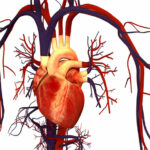Food for Thought
Our drink problem
‘How we drink and what we drink today is the result of major advances in food processing, distribution and aggressive marketing campaigns on the part of the beverage industry,’ says Prof Barry Popkin in his new book, The World Is Fat. ‘Throughout the world, from about 1990 on, the beverage industry has been successful in marketing the idea of always drinking: drink when you are active, drink when you are resting and relaxing, and drink when you go to a party. With functional beverages now hitting the marketplace you can also drink for extra energy, drink for better skin, drink for more vitamins, and drink for extra antioxidants. And all these drinks come with a bonus: calories.
![[DRINKS]](https://glycemicindex.com/blog/2009/may2009/soda_cans175.jpg)
About the time of World War II, we Americans drank mostly water, tea, coffee, a limited amount of beer and hard alcohol, and whole milk, and our calorie intake from beverages was between 100–200 calories (420–840 kJ) a day. By 2002, we more than doubled our intake of caloric beverages, and the average American is now getting around 400 calories (840 kJ) a day from beverages. From 1965 to 2002, over two-thirds of this increase (and half our total calories from beverages) was due to fruit juices and soft drinks.
At the same time we are gulping down these calories, we aren’t cutting back on our food intake to compensate. The consensus among scientists from dozens of meta analyses, large scale and smaller epidemiological studies, clinical and animal work is that there is no dietary compensation when we consume a beverage with calories. This includes sugar-sweetened beverages and even fruit juice, lattes, heavily sweetened teas, energy drinks and vitamin waters (currently we don’t know where milk and milk drinks stand). In other words, with these items being drunk instead of water, all the calories from these are added to our overall energy intake and food calories are not reduced. A large body of literature shows consumption of these beverages are linked to weight gain, abdominal obesity, diabetes and heart disease. Studies have been undertaken in all continents with similar results.
My favourite way to help people lose weight is to look at what they drink over the course of a typical day. It’s easy to cut out some Coke, Pepsi or Mountain Dew or to cut down to one beer or one glass of wine. These small reductions matter over time. If you have diabetes or if you’ve recently had a heart attack, for example – a shift to only noncaloric beverages will do it for many people. The top 40% of caloric beverage drinkers in the US consume over 760 calories (3,190 kJ) a day from beverages. Obviously cutting out some of these calories would result in immediate weightloss.’
– Barry Popkin
For more on why We Are What We Drink, check out: The World Is Fat.



![[BOOK COVER]](https://glycemicindex.com/blog/2009/may2009/worldisfat150.jpg)




